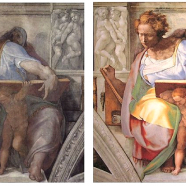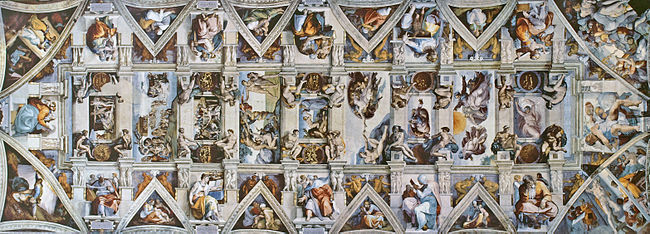Sistine Chapel LEDs: A Masterpiece Of Fine Art Lighting
The Sistine Chapel ceiling frescoes are the world’s most recognized works of art by High Renaissance artist Michelangelo. Epic in scope, the frescoes, which depict scenes from the Book of Genesis, have been described as “an artistic vision without precedent,” and “a veritable beacon to our art, of inestimable benefit to all painters, restoring light to a world that for centuries had been plunged into darkness.”
While Michelangelo’s works may have lit the way for untold numbers of artists who followed, until recently, inefficient, lifeless, and heat-generating halogen lamps were being used to light his masterpiece. Recognizing the potential for improvement, multinational lighting manufacturer Osram teamed with universities and private institutes to install a new LED lighting system for the Vatican masterpiece.
The EU and private funders helped fund the installation, which was designed to address the shortcomings of the previous lighting system Installed in the 1980s, the original halogen lamps failed to highlight the full scope of colors used in the piece, while converting only 10% of the energy used into light (the other 90% was lost to heat generation). Combined with this high heat output, an increasing number of yearly visitors meant rising temperature concerns, which could potentially damage the work itself.
For this new installation, 7,000 low-heat LEDs were specially adjusted to create the most natural, homogenous fine art lighting possible. The hue of each LED was individually adjusted until the results were precisely matched to the color pigments used 500 years ago by Michelangelo in the different sections of the massive work of art.
According to Mourad Boulouednine, Osram’s regional head of projects, the Renaissance pigments required a different color rendering index than the ones made available the eight standard testing colors. After performing an optimization process by analyzing light coming from a particular spot on the piece, the team found the “optimum color rendering for the Renaissance spectrum and not for the standard color spectrum.”
Due to the compact size of LEDs, the new lighting system is invisible to visitors and provides an even application of light with no glare. The directional LED lights were oriented using the architectural structure of the building to appear as though the light was coming in naturally through the windows.
Although a significantly greater amount of light is illuminating the Sistine Chapel ceiling, the LED lighting system is estimated to slash energy consumption by 60 to 80%. The savings come from the lower energy requirements of LEDs, in addition to the fact that directional LED lighting suffers no spillover, meaning all the light generated is being put to a specific purpose.
The most ambitious and dynamic of all the images on the Sistine Chapel ceiling is that of the first scene, where God divides light from darkness. Today, LED lighting is giving humans themselves the power to better separate light from darkness in a more dynamic way than previously imaginable, the results of which are improving fine art lighting for generations to come.
Any Questions?
Do you have any more questions about LED lights? We’d love to discuss LED strip lighting possibilities with you as soon as you’re ready.
Contact:
Phone: 1-844-FLEXFIRE












